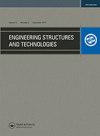DURABILITY OF A REPAIRED DUNE SAND MORTAR MODIFIED BY CERAMIC WASTE
引用次数: 4
Abstract
The waste-modified mortars have an important place in the range of repair products. The objective of this study is to better understand and analyze, in one hand, the influence of ceramic waste in the dune sand mortars on the quality of repair concrete surfaces, in the other hand, durability of the mortars in interaction with the substrates to which they are applied. As regards the mortar layer durability, two indicators are chosen: the first is the adhesion to the substrate, and the second is the stress state in the mortar layer. For this, two types of modified mortars were made using two types of waste ceramics: sanitary ceramics and earthenware. To evaluate the quality of the adhesion to a substrate surface to be repaired, an adhesion test based on the three point bending test was implemented, taking into account the influences of the environment, the state of the surface of the substrate, the nature of the substrate defined by its water saturation degree and its porosity. The mortar composition parameters, in particular, the nature and the amount of ceramic, were studied. The results enable us to evaluate the influences of the waste ceramic incorporation in the mortar and the substrate condition on which the mortar is applied. Show that the adhesion depends on both the type and the amount of the used ceramic waste and the applied cure. It is optimized from 30% of ceramic earthenware and sanitary mortar adhesive strengths are higher than mortars based on dune sand ones.陶瓷废料改性沙丘砂浆的耐久性
废改性砂浆在修补产品中占有重要的地位。本研究的目的是为了更好地理解和分析,一方面,沙丘砂砂浆中的陶瓷废料对修复混凝土表面质量的影响,另一方面,砂浆与所应用的基材相互作用的耐久性。砂浆层耐久性选择两个指标:一是与基材的附着力,二是砂浆层内的应力状态。为此,利用两种废陶瓷:卫生陶瓷和陶器,制成了两种改性砂浆。为了评价待修复基材表面的粘附质量,在考虑环境、基材表面状态、基材含水饱和度和孔隙率的影响下,进行了基于三点弯曲试验的粘附试验。对砂浆的组成参数,特别是陶瓷的性质和用量进行了研究。研究结果使我们能够评估废陶瓷掺入砂浆和砂浆所应用的基材条件的影响。表明附着力取决于所使用的陶瓷废料的种类和数量以及所使用的固化剂。从30%的陶瓷陶土和卫生砂浆的粘结强度比沙丘砂基砂浆的粘结强度高。
本文章由计算机程序翻译,如有差异,请以英文原文为准。
求助全文
约1分钟内获得全文
求助全文

 求助内容:
求助内容: 应助结果提醒方式:
应助结果提醒方式:


